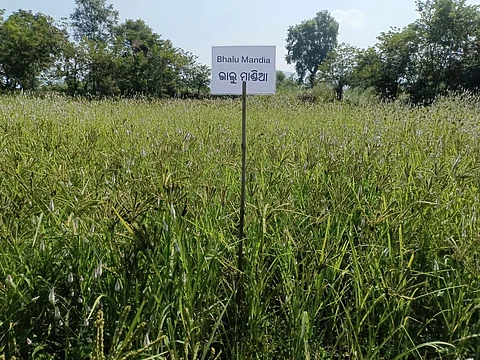

A state initiative meant to revive millet cultivation in Odisha is drawing criticism from tribal communities, who alleged that the programme is displacing native seed varieties with high-yielding alternatives unsuited to local conditions. Farmers, nutritionists and local organisations have raised an alarm over what they described as a deviation from the original goals of the Odisha Millet Mission (OMM).
The Shree Anna Abhiyan, officially known as the Special Programme for the Promotion of Millets in Tribal Areas of Odisha, was launched by the Odisha government in 2017 with the aim of reviving millet cultivation in farms and restoring millets to local diets.
For decades, millets — particularly finger millet (ragi or mandia) and small millets such as gurji — formed an integral part of the diet and livelihood of tribal communities in the region. Undivided Koraput district was home to at least 14 traditional ragi varieties, including jam mandia, jana mandia, Dussehra mandia and kalia mandia. Known for their adaptability, climate resilience and nutritional value, these varieties offered a natural safeguard against malnutrition.
Every 100 grams of finger millet contains 7.3 grams of protein, 3.6 grams of fibre and 2.7 grams of minerals, according to a 2019 report by the Directorate of Agriculture and Food Production, Odisha. It is also a rich source of micronutrients, providing 3.9 milligrams of iron and 344 milligrams of calcium, making it a highly nutritious staple in tribal diets.
With the introduction of high-yielding, non-indigenous varieties such as GPU-28, GPU-48, KMR-204 and CSV-27 under the Shree Anna Abhiyan, local farmers expressed fears of losing their native seeds.
Koraput district is the largest producer of finger millet both in Odisha and across the country. In 2021–22, finger millet was cultivated on approximately 74,000 hectares in the district, accounting for around 24.7 per cent of its total cultivated area, show numbers from District Agriculture Office, Koraput and Watershed Support Services and Activities Network, according to a 2023 paper published in the journal Indian Journal of Agricultural Economics.
Of the 72,689 hectares under millets, finger millet alone covered 59,139 hectares — roughly 79 per cent, according to the online platfor Millet Advisor. The district’s current annual requirement of finger millet seed stood at around 2,500 quintals, most of which was traditionally stored by farmers from their own harvest.
However, the Odisha State Seed Corporation reportedly plans to replace 871 quintals — about 35 per cent of the district’s requirement — with high-yielding seed varieties, according to a letter by Agricultural Technology Management Agency, Koraput. A copy of the letter is with this author.
“These new varieties will replace our indigenous ones,” said Laichan Takri, a tribal farmer from Chandalmundar village in Koraput Sadar block. “We doubt whether they are suited to our soil and climate like our own Mandia,” he added.
Echoing this concern, Ghasi Gadenga from Surumi village pointed to the drought-resistant nature of traditional crops. “Our millets have survived erratic weather and poor soils for generations. These sarkari seeds are not tested for such conditions here. We urge the government to withdraw these varieties immediately,” he said, warning of protests if their concerns went unheeded.
Farmers in western Odisha expressed similar anxieties. “This is a government conspiracy to eliminate our traditional seed varieties and local agricultural practices, pushing us toward complete dependence on seed companies for millets — just as we’ve already become reliant on seed stores for paddy,” alleged Saroj Mahanty, a prominent activist and convenor of Swadeshi Bihana Manch, an organisation working to conserve indigenous seeds. “The government’s goal is full corporatisation,” he added.
Activists also criticised the policy shift. “The original objective of the Odisha Millet Mission was to promote and protect indigenous millet cultivation,” said Bidyut Mohanty, founder and secretary of Koraput-based non-profit Society for Promotion of Rural Education and Development (SPREAD), which works closely with tribal farmers. “What we are seeing now is a complete reversal — an imposition of uniform, external seed varieties that could endanger local biodiversity and food sovereignty,” he added.
While the state government claimed that high-yielding varieties were introduced to enhance productivity and marketability, critics argued that the move undermined ecological sustainability and cultural heritage.